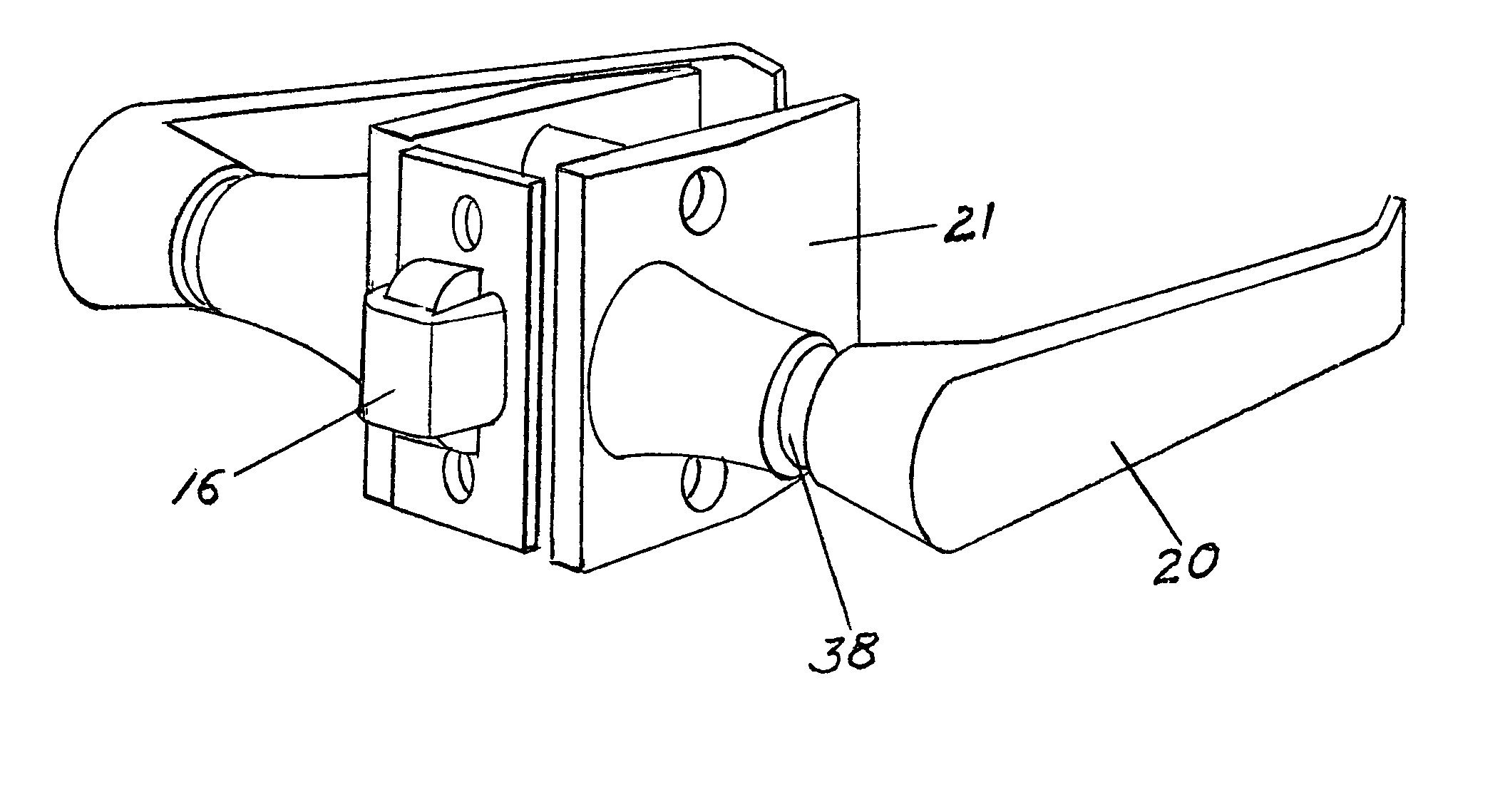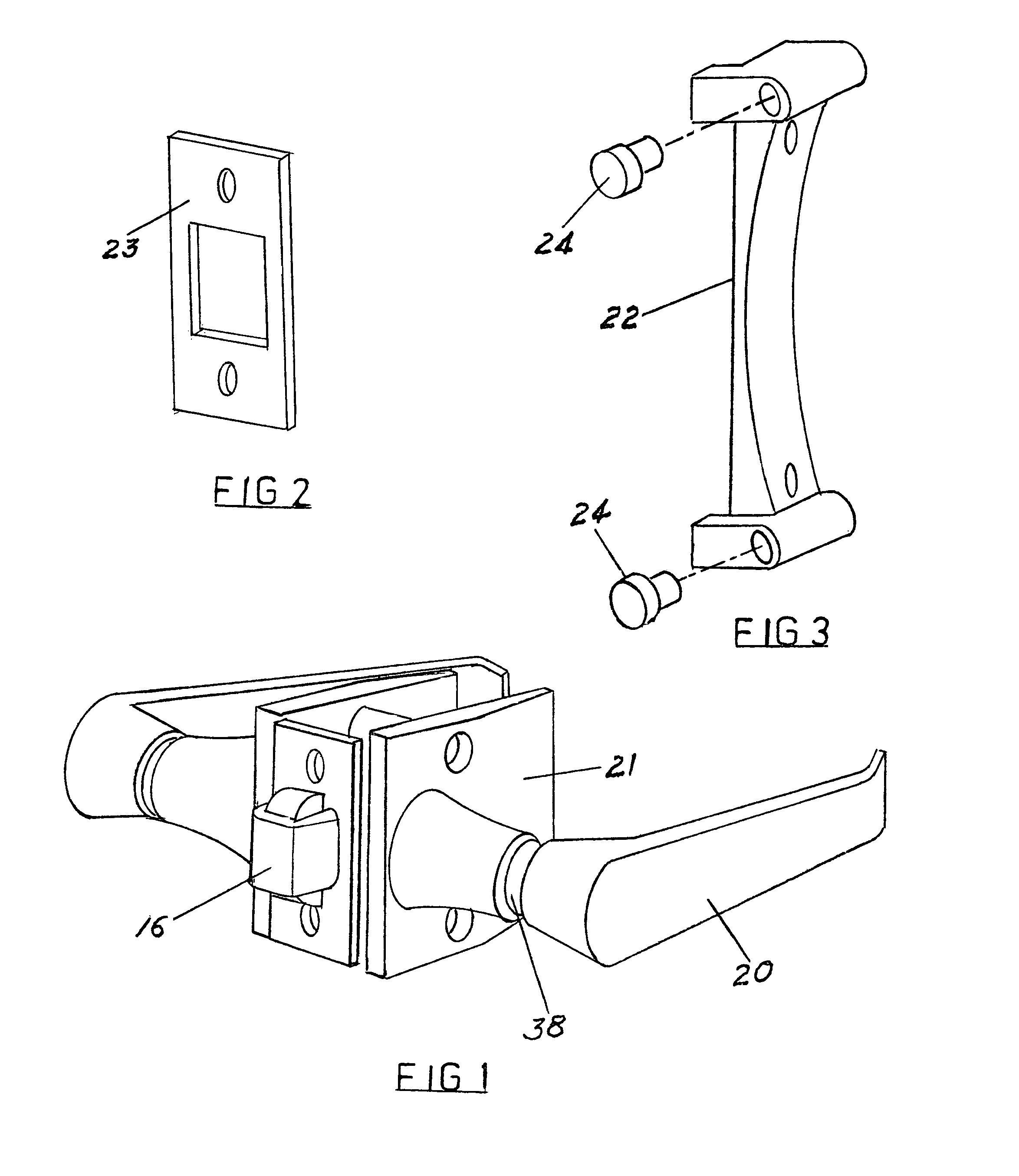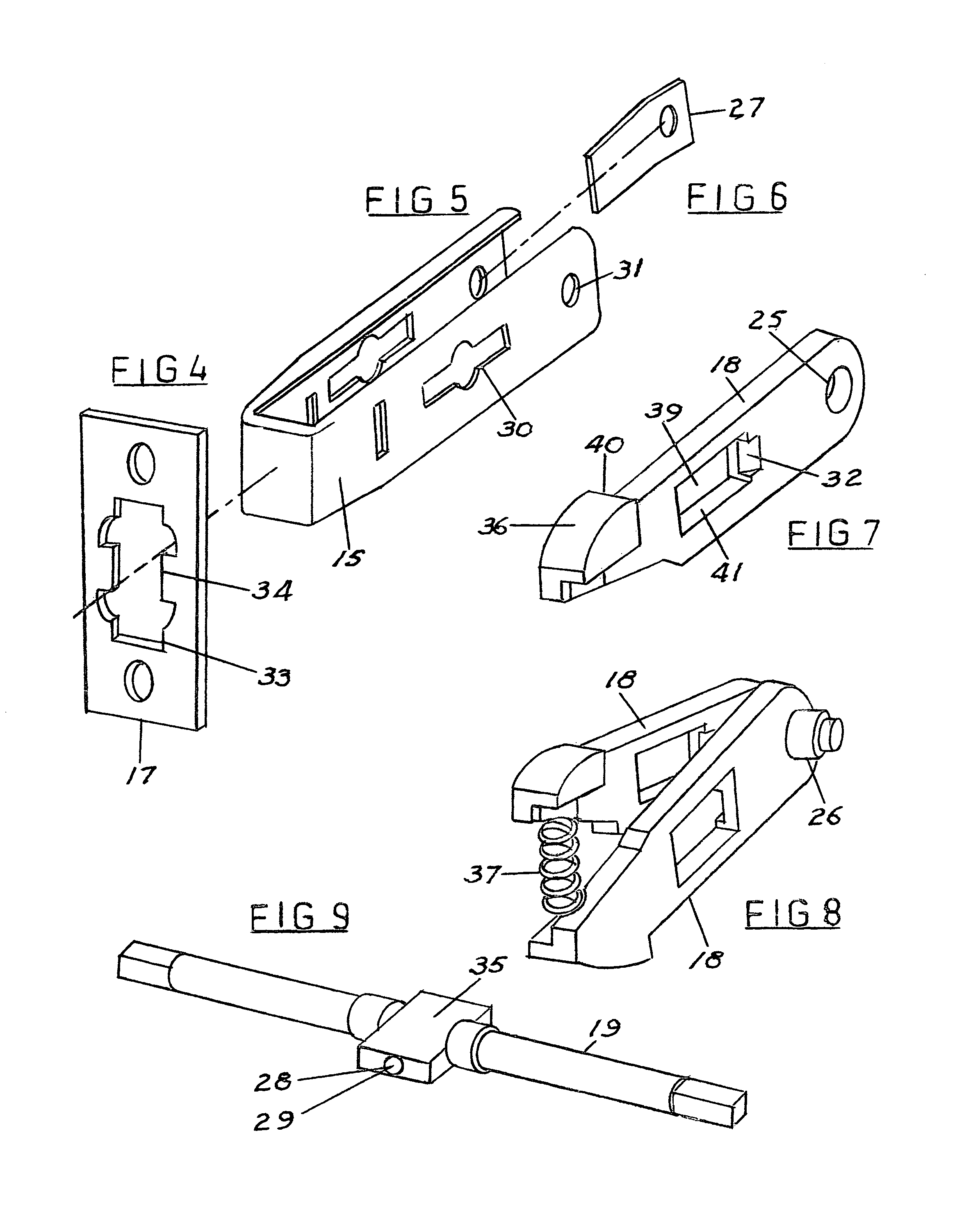Lever-handled pocket door latching system
a latching system and pocket door technology, applied in the field of latching interior pocket doors, can solve the problems of insufficient modern home use, outdated and woefully inadequate technology for interior pocket door hardware, and the marked decline of installation of this type of door, so as to facilitate the operation of handicapped people, improve the effect of security, and improve the security of the interior pocket door latching system
- Summary
- Abstract
- Description
- Claims
- Application Information
AI Technical Summary
Benefits of technology
Problems solved by technology
Method used
Image
Examples
Embodiment Construction
[0017]There are some home installations, such as clothes closets, laundry, and utility rooms, where this looking feature would not be required. In these installations, the embodiment can be configured to effectively de-activate the locking mechanism. Should the locking feature be desired later, the operating shaft is turned ‘end-for-end’ in the embodiment, and the locking feature is restored.
[0018]There might also be installations when a “keyed lock” is desirable on a pocket door. As presently determined, this same latching embodiment can be used with a modified shaft support, into which a keyed cylinder can be installed. The shaft support would accommodate this keyed cylinder as well as a moveable locking element within, which has been designed to engage a slot in the hub of a handle when the key in the cylinder is turned 90 degrees. When this locking element is engaged in the slot, the handle is prevented from moving laterally and therefore cannot be rotated to unlatch the door.
[0...
PUM
 Login to View More
Login to View More Abstract
Description
Claims
Application Information
 Login to View More
Login to View More - R&D
- Intellectual Property
- Life Sciences
- Materials
- Tech Scout
- Unparalleled Data Quality
- Higher Quality Content
- 60% Fewer Hallucinations
Browse by: Latest US Patents, China's latest patents, Technical Efficacy Thesaurus, Application Domain, Technology Topic, Popular Technical Reports.
© 2025 PatSnap. All rights reserved.Legal|Privacy policy|Modern Slavery Act Transparency Statement|Sitemap|About US| Contact US: help@patsnap.com



